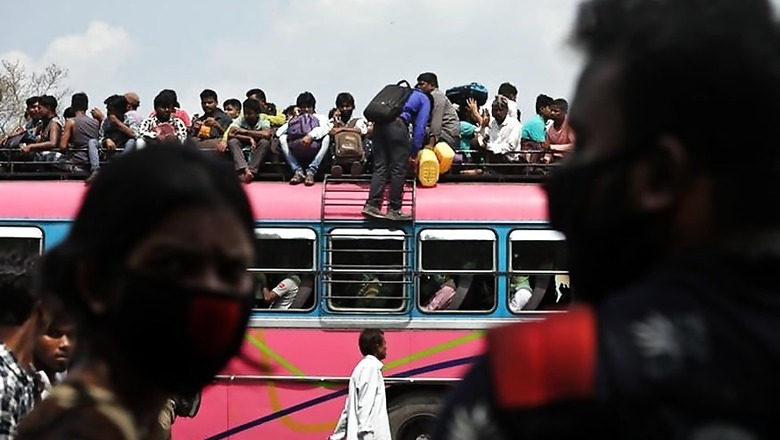
views
strong>New Delhi: Mitigation or quarantining of people with Covid-19 symptoms, rather than containment or screening at airports, is more effective in delaying and controlling the transmission of coronavirus, said a research paper authored by scientists of Indian Council of Medical Research (ICMR) and mathematical modellers.
The analysis shows that even if symptomatic cases are comprehensively identified and quarantined, the delay in epidemic timing within India would be in days and not weeks.
The best use of resources, the paper said, would be to spend it on mitigation of infection the community. The research paper had arrived at these conclusions almost a month before India witnessed a surge in the cases of Covid-19 after seeing a slow growth in the initial period.
Since January 29, when the first case of Covid-19 was detected in Kerala, the country has detected 492 cases. But the rise in cases has been faster since March 14 and over the past four days there have been more than 50 cases per day.
Though the paper does not estimate the burden of the disease, meaning expected cases or deaths that it may cause, it said that an optimistic scenario to reduce cases was to quarantine 50 per cent of symptomatic cases within three days of developing symptoms. “This would reduce the cumulative incidence by 62 per cent and the peak prevalence by 89 per cent.”
The paper argued that such measures could reduce peaking of the epidemic substantially, thus minimising the pressure on public health services. As a consequence, “the intervention has the effect of ‘flattening’ the epidemic curve” and it will distribute the cases over a longer duration and reduce cumulative incidence by 62 per cent, the paper said.
In contrast, a pessimistic scenario where quarantine of symptomatic cases was not up to the mark, the cumulative incidence falls to two per cent and peak prevalence by eight per cent.
India has adopted both screening (containment) and quarantine and lockdown (mitigation) measures to break what ICMR scientists called, “the chain of transmission”. However, in January and February, when the outbreak had not affected India in large numbers, the focus of India’s strategy was on closing of borders and airport screening. The paper looked into the efficacy of the containment part of the strategy, albeit based on limited data and only of arrivals from China.
The paper found that even if symptomatic arrivals alone were screened, the epidemic could be delayed only by a maximum of 45 to 47 days. “Identifying at least 75 per cent of the asymptomatic individuals was needed, in order to delay the within-country outbreak by an appreciable amount. Additional detection of 90 per cent asymptomatic individuals would delay the average time to epidemic by 20 days. These levels of coverage among asymptomatic cases are practically infeasible, requiring almost all passengers from the identified flights to be screened,” the paper said.
It added that even if the strategy aggressively screens symptomatic people, persons with asymptomatic infections ones will be missed and they can go on and cause more transmission.
“Our results suggest that in order to have an appreciable effect on delaying the establishment of transmission of COVID-19 in India, airport arrival screening will need to have near-complete capture of incoming COVID-19 cases, including asymptomatic cases,” the paper stated.




















Comments
0 comment